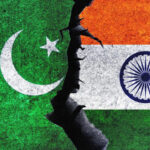Various tactics are adopted by women journalists to keep away harassers
It was a secret code of signals that young women journalists shared in the field that helped me during the first election I covered. The code was simple: as we waded into the crowds of men at political rallies, we held on to each other’s hands and made our way to the front, warning each other to avoid areas where people were particularly rowdy. Often we would arm ourselves with tripods and ladders and position them at strategic angles to keep those people at a safe distance. Being stared at, pawed, and having people ‘graze’ by you, was a professional hazard, and most women journalists deal with these hazards without allowing them to disturb their reporting.
Decades later, it is hard to believe how little has changed. In December 2012, at the television station where I worked,we heard multiple accounts from young reporters describing how even as people poured into the India Gate lawns in Delhi to protest against the gang rape of a student, there were some in the crowd who were targeting the young journalists covering the event. As tearful reporters told their stories, of being touched and jeered at by male ‘protesters’, I wondered what it would take to change our society — even a brutal gang rape was not enough clearly. Most TV channels then used high platforms to keep reporters out of harm’s way. But much more was needed.
Tales that courageous women are sharing today are far more alarming as they involve harassment at their own workplaces, which should be safe, by their own seniors. But there is another hazard that journalists face in the field which is far less spoken about, finding little place even in their own notebooks.
The choices for young reporters are stark: handle the harassers directly, by shouting or hitting them, or complain to seniors at work and have them take you off the assignment. For many, sharing their trauma with family members would mean they wouldn’t be allowed to go back to work. Newsrooms need both men and women mentors who will work with reporters in such situations, explaining the need for safety mechanisms and imparting the strength to deal with these situations.
I have learnt of other hazards from experience: the bureaucrat who insists on meeting you at odd hours, in odd places, including his home; the diplomat who asks you to lunch, but ends up propositioning you; the Minister who slips you a card that says he is attracted to you. If you make a huge fuss, you don’t just lose a source, you could lose professional standing. You may reject their advances without a fuss, but the scars remain.
The truth is that these harassers are the exceptions and most women journalists navigate these situations without allowing them to overpower them professionally. Even so, one knows that male colleagues would never think twice about accepting invitations to meet officials and potential sources, without looking for safety in numbers. As the #MeTooIndia movement gathers steam, hopefully greater awareness of these issues will see professionals from all genders come together to ensure that the next generation is safe from the humiliation of such harassment as well.





NO COMMENT